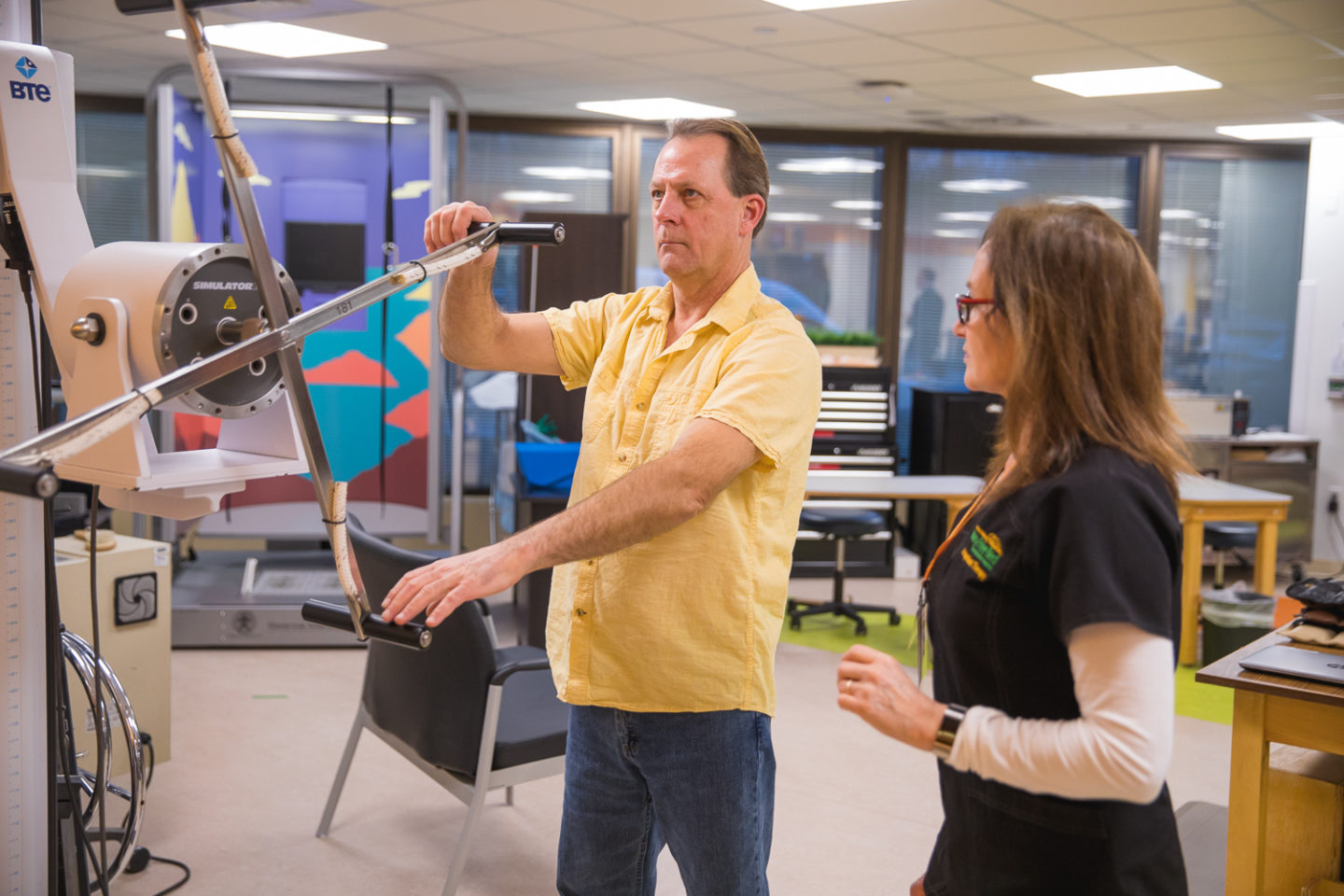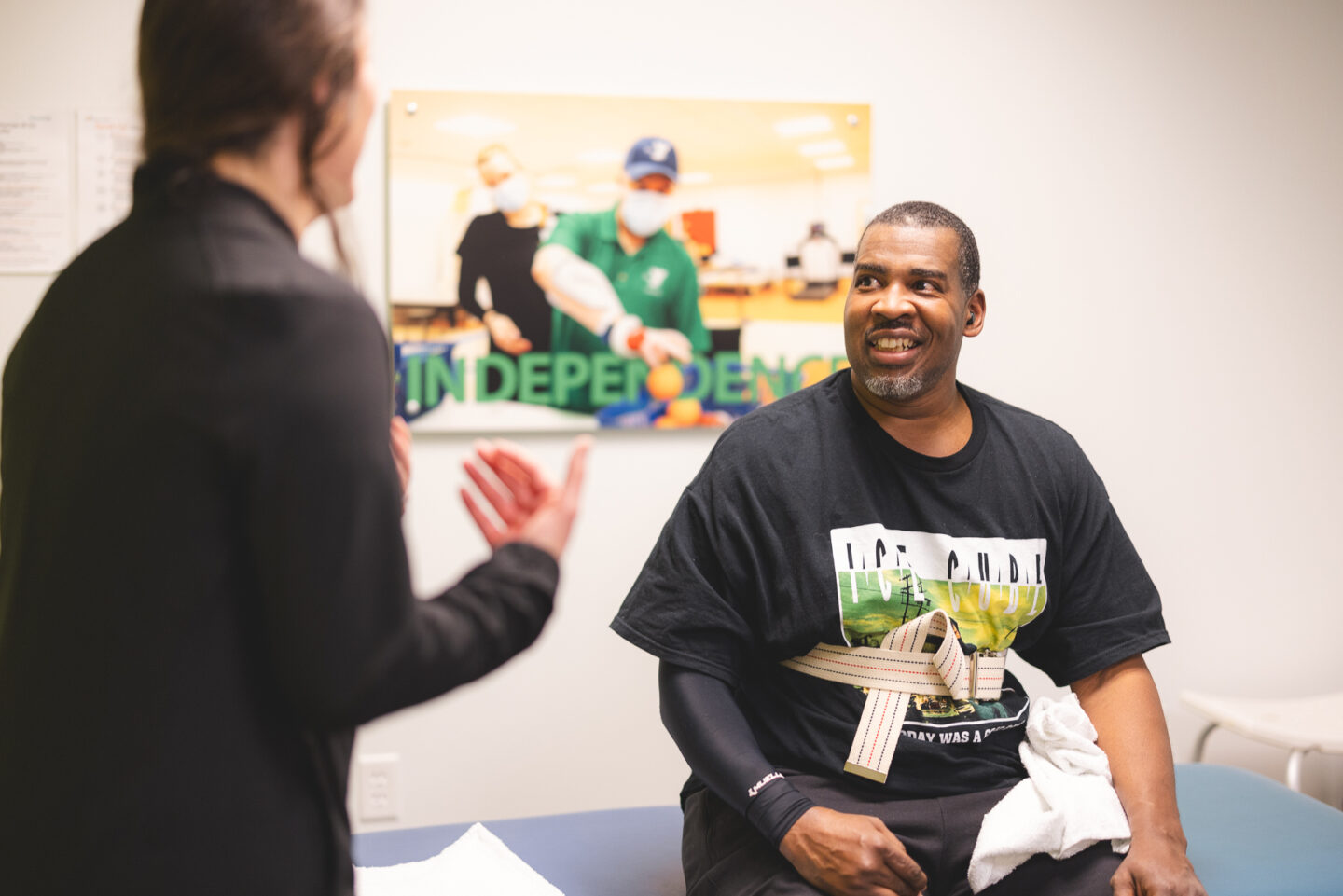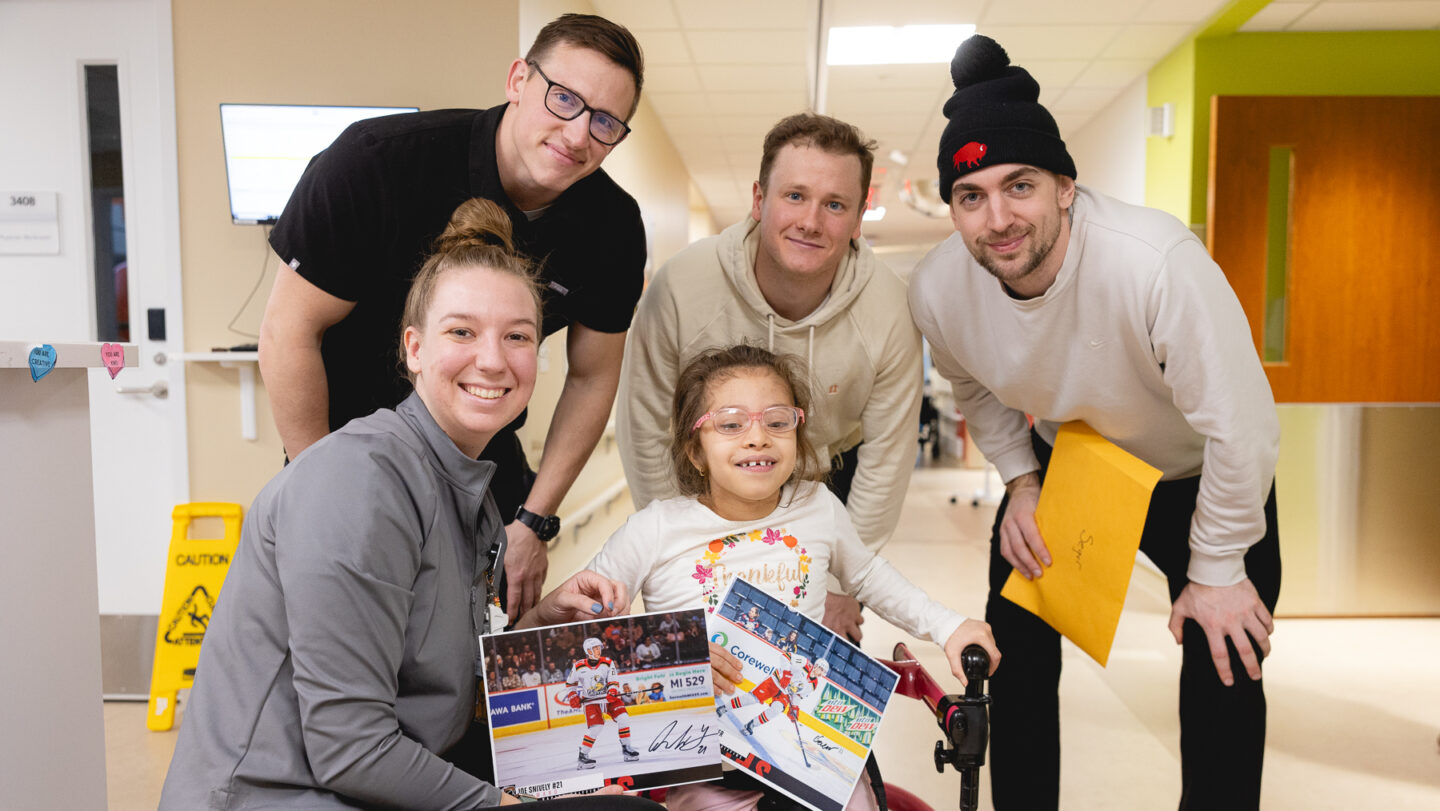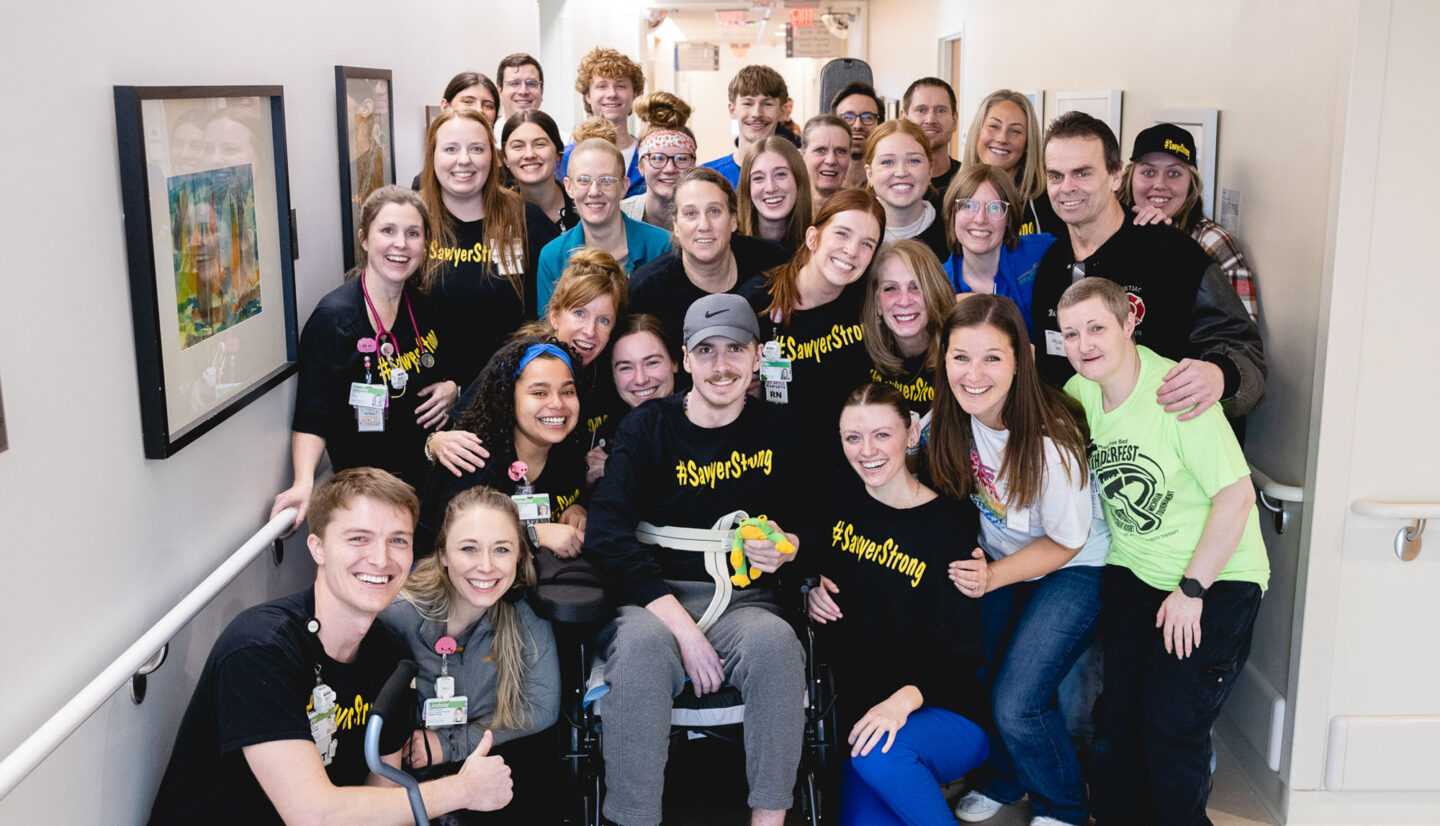Posted on February 24, 2020
Education is an important part of pain rehabilitation
From our experts: Nicole DeHaan is a physical therapist and therapeutic pain specialist in Mary Free Bed’s Pain Rehabilitation program. As a member of the program’s team of experts, she works with patients to reduce their chronic pain and improve their ability to function.
People with chronic pain recognize the pain they’re experiencing is … different. Unlike pain they’ve had before, it’s been going on for a long time, it’s not getting better and it’s limiting their ability to function. Research shows education regarding pain can help lower its threat and, along with other treatments, improve function and reduce the pain itself.
That’s why clinicians in Mary Free Bed’s Pain Rehabilitation program provide consistent and cohesive education to patients. We can help them understand the difference between acute pain and chronic pain, and teach techniques to reduce pain and promote function. Here are some basics:
What is pain?
We receive information about our bodies and environment through nerves that travel to our spinal cord and then to our brain. The brain deciphers the information and determines whether action is required. Much of the information coming in doesn’t require a response, and the brain filters it out. However, let’s say you pinch your finger. The brain receives the message and generates pain so you can stop what’s happening to pinch your finger.
Our brains use many different things to rapidly determine a response. Among other things, it relies on what we see, past experiences, stories we’ve heard, fears we may have, the importance of a limb to our job and responses of our family and friends to our pain. We also know that the brain can be easily fooled: Have you ever experienced pain without an injury or an injury without pain?
What is chronic pain?
Unlike acute pain, which occurs with an injury, illness or medical procedure, the cause of chronic pain isn’t always clear. While many mechanisms are at play, one is that danger messages are being sent to the brain for scrutiny even though there’s no “cause,” such as tissue damage or a broken bone. The pain is very real, but it’s coming from sensitive/overactive nerves rather than damage to the tissues (bone, ligaments, tendons, muscles, etc.). It’s like a home alarm system that goes off simply because a neighbor is walking her dog on the sidewalk in front of our house, a squirrel runs through the backyard or a leaf blows by the sensor. The alarm goes off ALL THE TIME, and it’s not valuable information anymore.
What do we do now?
The nervous system is very adaptable. For whatever reason, it’s adapted to become much more sensitive, but we can influence the system to become less sensitive using many different techniques, and education is one of them. The more we understand pain, the less need there is to guard and protect against it. The nervous system’s increased sensitivity makes it aware of ALL MESSAGES coming in from the painful area due to an increased need to protect it.
If we can begin to understand that pain doesn’t necessarily mean there’s something wrong, there’s less need for the nervous system to protect and its sensitivity level can decrease. Other methods include relaxation and mindfulness, aerobic exercise, stretches and proper medication usage. These methods can help you re-engage in things that are meaningful to you.
The Pain Rehabilitation Program serves people with varying degrees of chronic pain and other conditions, such as fatigue, fibromyalgia, headaches or migraines, and musculoskeletal pain. We offer Pain Rehabilitation at four locations across the state – Grand Rapids, Holland, Kalamazoo and Traverse City. For more information, call 616.840.8684 or click here.






